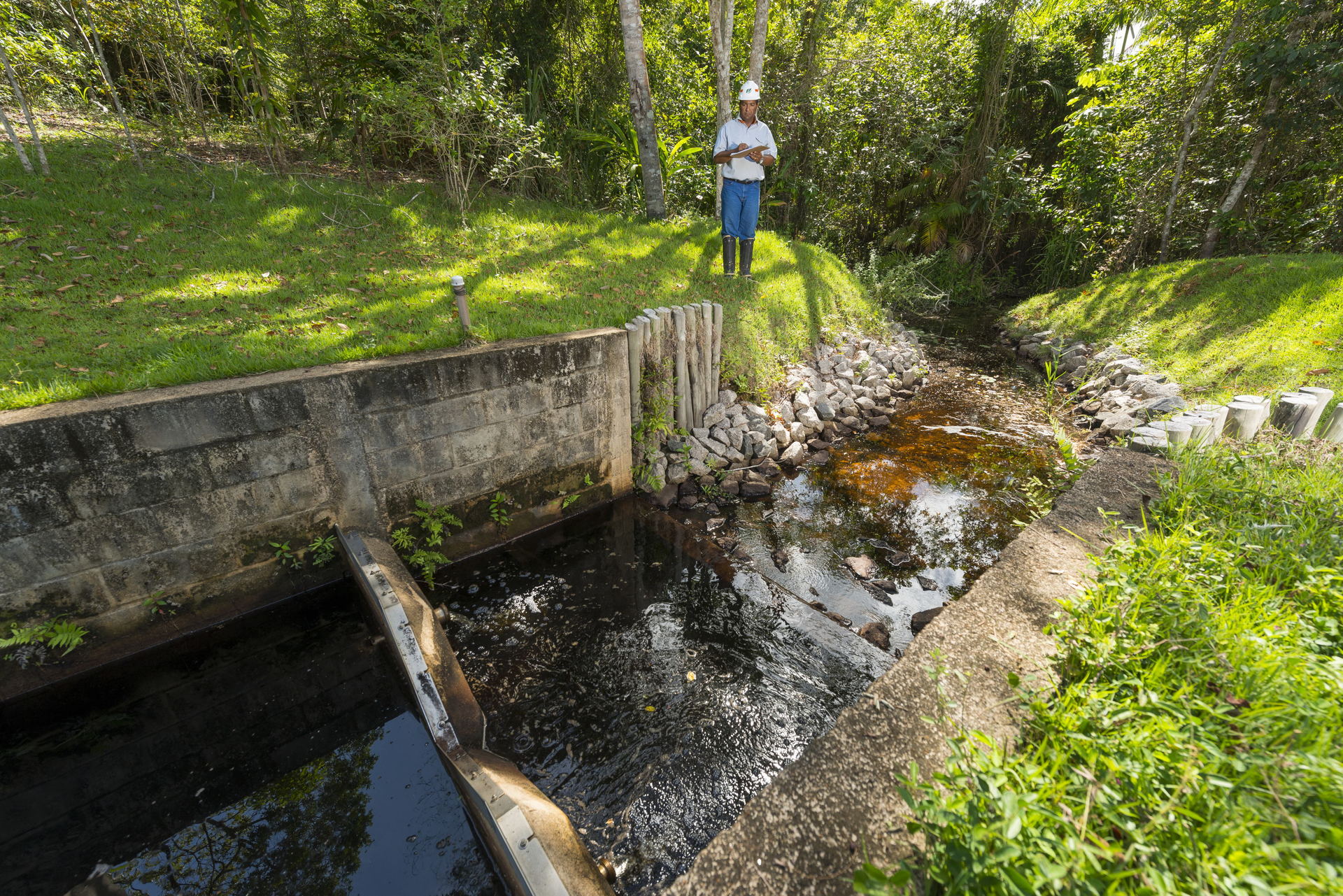Efforts are urgent to avoid or minimize the risks of water shortage, arising or intensified by the increase in global temperature. For Fibria, which depends directly on its planted and native forests, the work to systematize, improve and expand management of water use in the field, at the mill and in the vicinity of its operations is a constant concern. So much so that in 2016, the company established a new Long-Term Goal for water, approved by the Executive Board, the Sustainability Committee, and the Board of Directors.
Significant developments have occurred in management of water resources at our mills and we have become a global benchmark in the industry.
The company's main advance in 2016, however, was with regards to the forest. We identified our performance level in all watersheds in which we are present. We created a plan to improve and disseminate technical knowledge in water management among our neighbors located in critical watersheds.
Learn about our main actions for monitoring, use, and recycling of water in forestry and industrial activities.
Read article in English “Growth and water balance of Eucalipytus grandis hybrid plantations in Brazil during a rotation for pulp production”.

Photo: Fibria archive.
Performance of the Water Working Group in 2016
Fibria mapped 246 watersheds and decided to act in nine of them, since they are in regions where the company maintains forests and since they are the only ones in which the company's forest management can influence the water supply in the watershed;
The study analyzes several aspects, such as the activities carried out and occupation of the watershed; the volume of water used in each activity; restrictions by the National Water Agency (Agência Nacional de Água - ANA); economic and social impacts of interactions with the watershed;
One of the company's commitments is to share lessons learned with our neighbors, in order to help them avoid or minimize water shortage. This includes: analysis of the type of water withdrawal and use in their lands; tips for reducing consumption; simple and low-cost irrigation, and recycling techniques; among others. The objective is to strengthen the dialogue and promote integrated action in these locations;
Based on detailed monitoring of water use by eucalyptus forests in the watersheds, Fibria intends to mitigate possible conflicts related to overlapping of water use, in addition to setting quantitative goals in 2019.
Adequacy of Dams
In 2016, we mapped the dams and weirs in our properties. Many of these areas, inherited from land acquisition, are small and used by livestock. Based on this diagnosis, we began monthly monitoring to identify the risks and perform corrections and maintenance services in this type of infrastructure. On the one hand, we avoid accidents during periods of heavy rainfall and, on the other, we maintain the flow rate of water to our neighbors even in times of reduced availability.
Forest Management System - Water Module
The company is also evolving its mechanisms to monitor forestry activities. Through the Forest Management System, organized in modules, we monitor several of our forestry activities and their results daily, such as eucalyptus and native species, harvest and, starting in 2016, consumption of water in our operations. The system has an interface with a georeferenced database (GIS) and a record of each spot where water withdrawal is allowed, which streamlines identification, control, and correction of eventual deviations.
TOTAL WATER WITHDRAWAL IN FOREST MANAGEMENT OPERATIONS, BY SOURCE
| TYPE OF WITHDRAWAL | 2014 | 2015 | 2016 |
|---|---|---|---|
| Aracruz | |||
| Surface water (m³) | 505,865 | 580,364 | 676,959 |
| Groundwater (m³) | 115,573 | 125,905 | 363,765 |
| Rainwater (m³) | 7,909 | 2,618 | 2,470 |
| Jacareí | |||
| Surface water (m³) | 181,568 | 172,211 | 218,147 |
| Groundwater (m³) | 34,189 | 55,620 | 11,942 |
| Public supply network (m³) | 7,825 | – | – |
| Três Lagoas | |||
| Surface water (m³) | 413,559 | 362,256 | 662,448 |
| Groundwater (m³) | 24,607 | 27,279 | 32,070 |
Aracruz: The nursery is new and was in a learning curve from 2014 to 2016 when it reached its production capacity This increased production of seedlings demands greater use of water.
Jacareí: The low rainfall in 2014 required the use of more groundwater in early 2015, returning to stability in 2016. However, when adding the totals (surface + groundwater) for both years, the variation is around 1%.
Três Lagoas: Expansion of the forest base to supply Horizonte 2.
